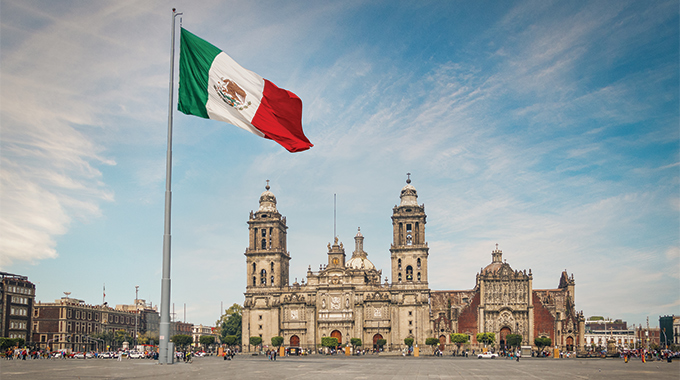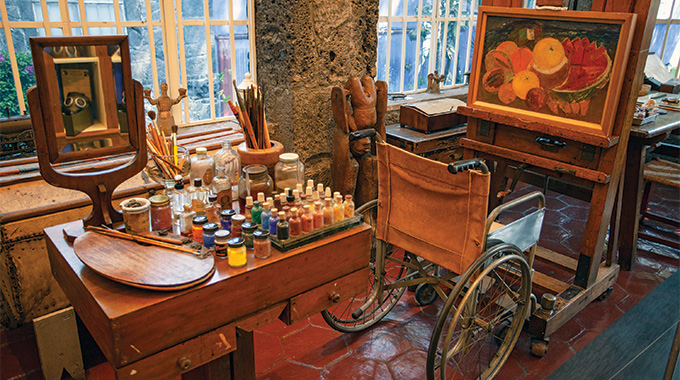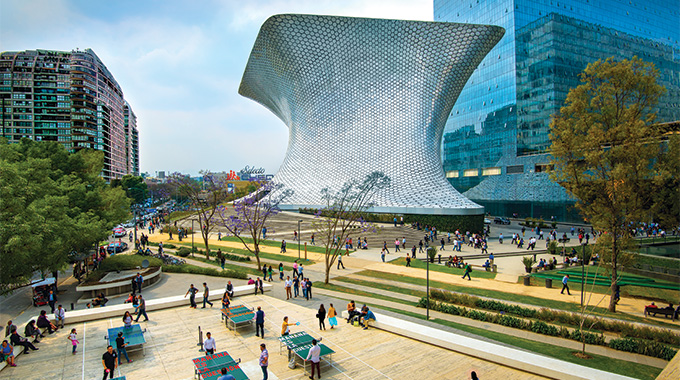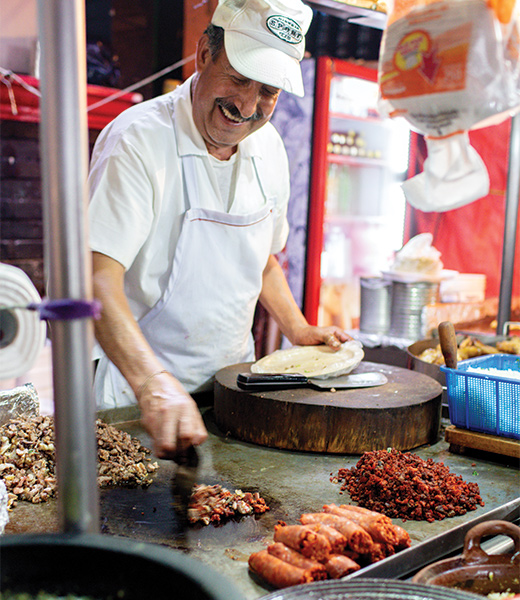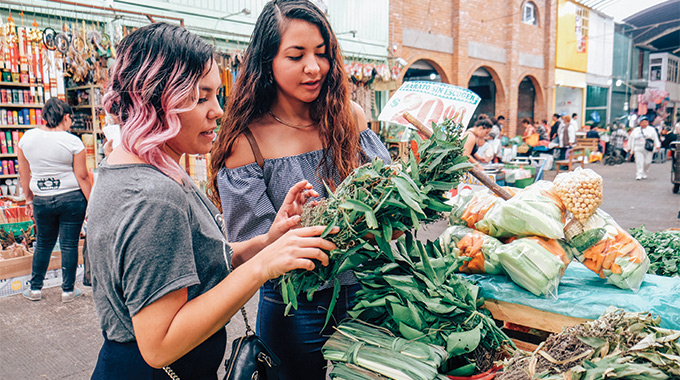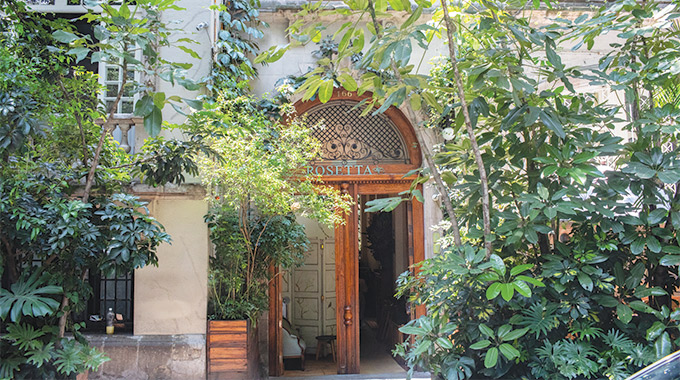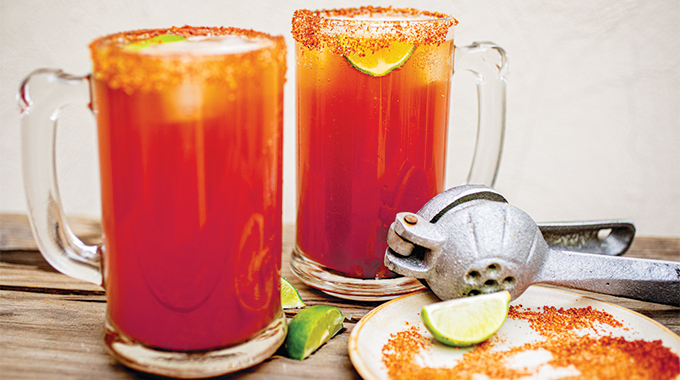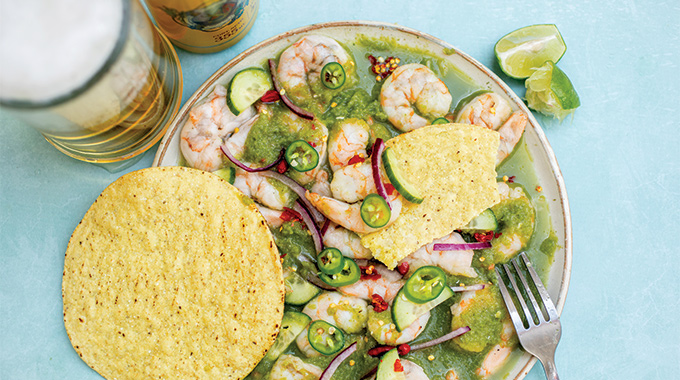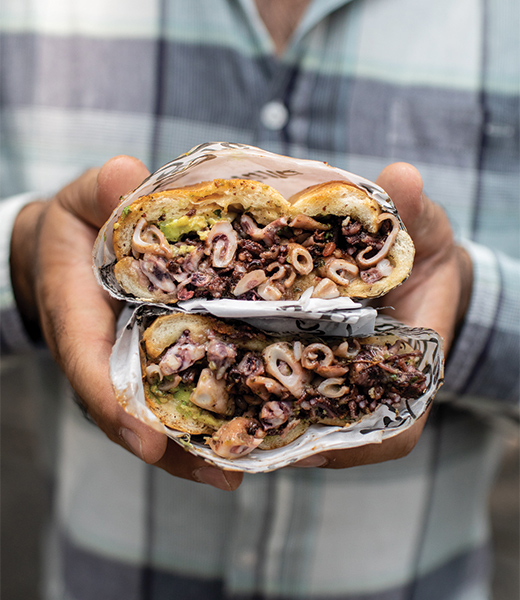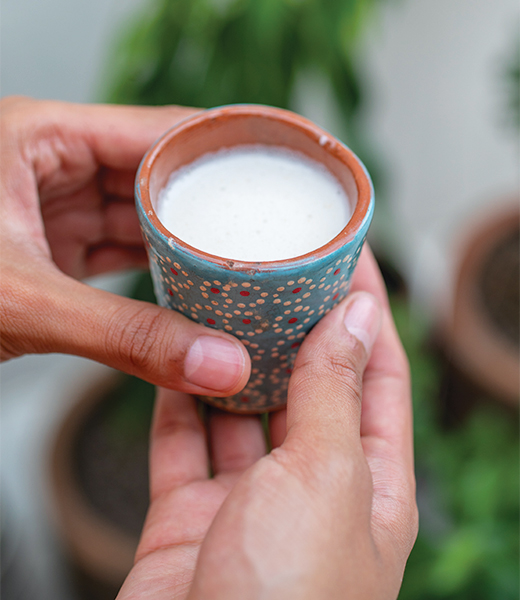A tortilla filled with thin, salty beef and french fries drips fiery green salsa over my fingertips. Two teenagers rap over a scratchy boom box soundtrack as men selling kitchen towels walk past and women cluster in groups, pressing tortillas and catching up on the latest news.
Mexico City’s second-largest market, La Merced, barely sleeps and is a microcosm of the city: colorful, chaotic, and delicious. To be sure, the market has a film of city grime, but it’s also home to the storied building blocks of Mexican cuisine, including stacks of tropical fruit, piles of smoked chiles, mountains of cilantro, and endless aisles of pork.
Mexico City is seemingly on the lips of everyone these days. North America’s most populous city is experiencing a well-deserved tourism boom as news spreads of its vanguard art, exquisite museums, and life-altering cuisine. Its reputation as little more than a dirty, dangerous megalopolis is, fortunately, shifting with each new visitor. Whether you are a first-timer or returning for more, consider these tips to make the most of your visit.


